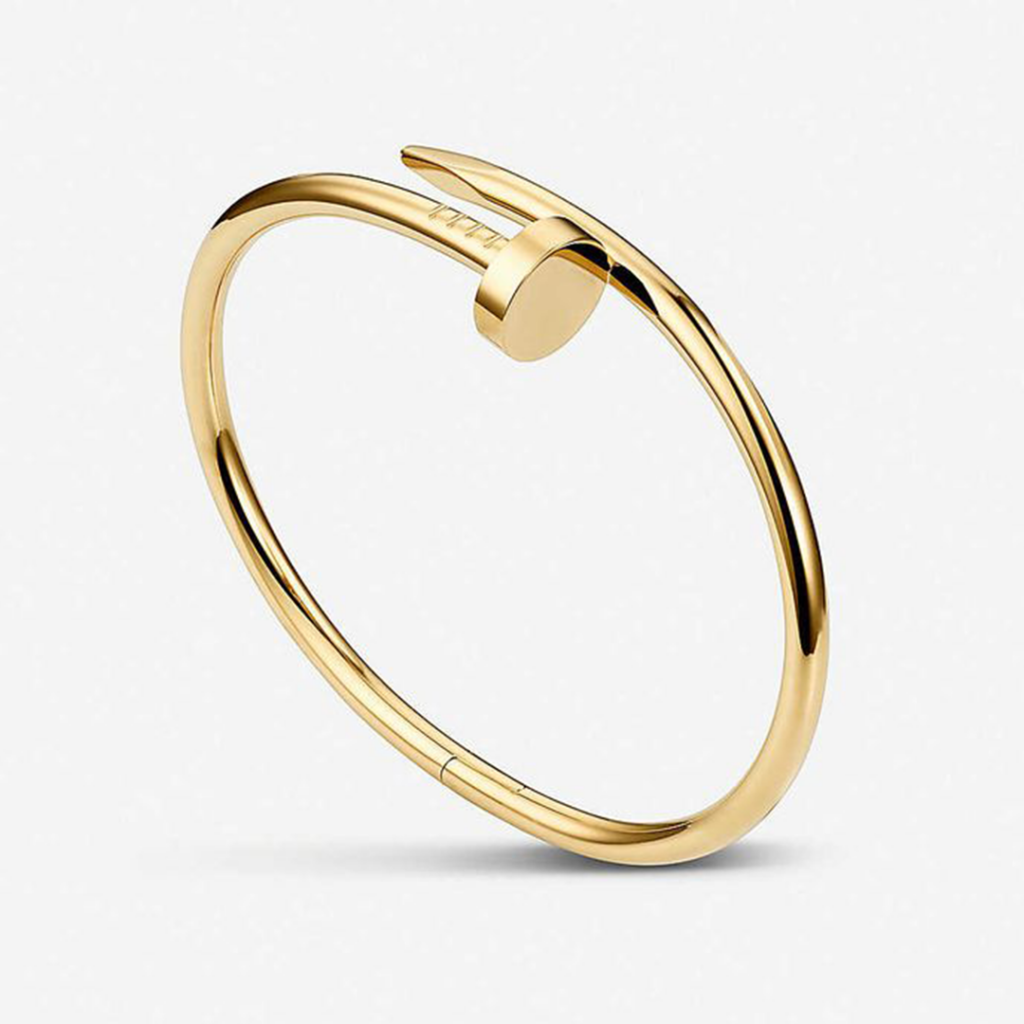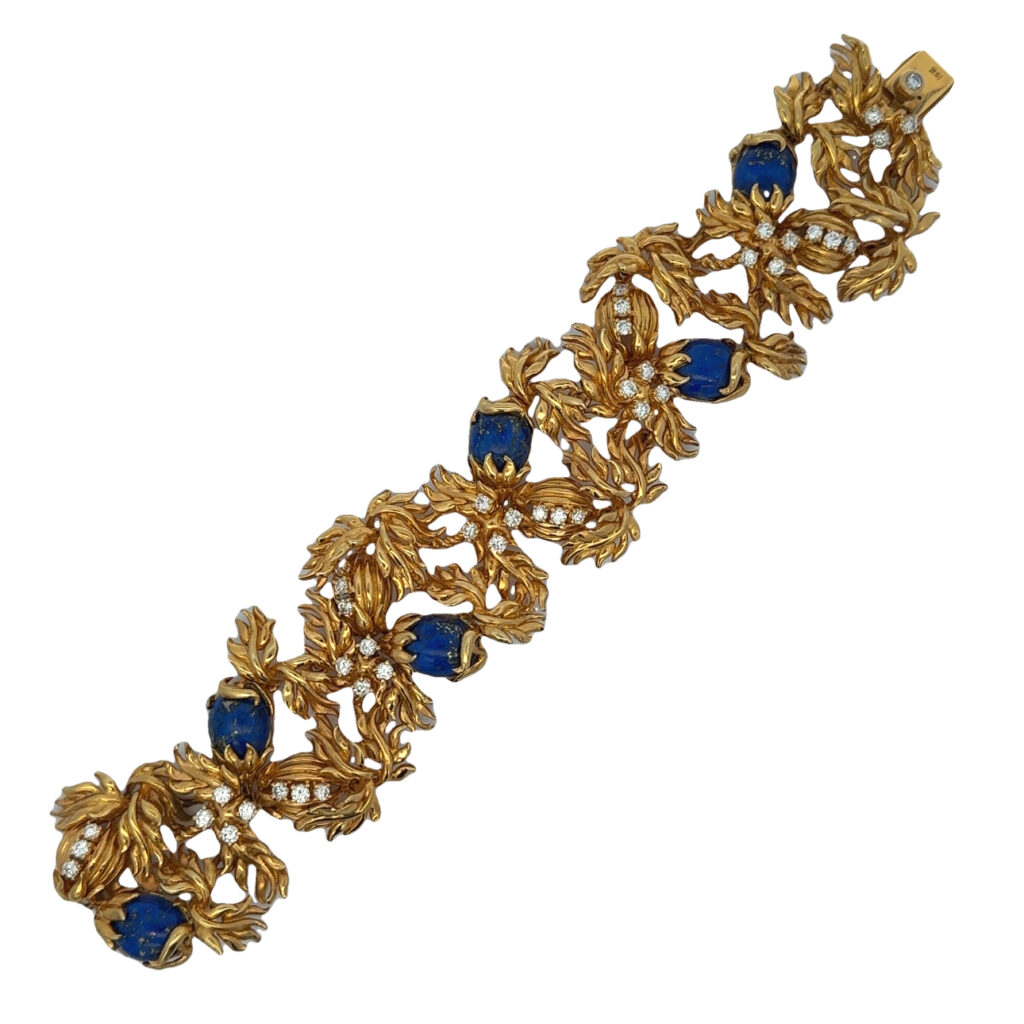Born from a broken heart, the Cartier Love Bracelet is emblematic of modern love. As well- known as the bracelet happens to be, Aldo Cipullo, the designer who created the iconic bracelet shined brightly, left us all too soon and is much less known than his famed bracelet design.
Dreaming of America
Aldo Cipullo was the eldest of five children. Born in Naples in 1935, he grew up in Rome. His father had a costume jewelry business there and Aldo worked for him. After completing his formal schooling, Aldo took on a jewelry apprenticeship. Obsessed with all things American – his friends nicknamed him “Aldo Americano” – due to his love of the United States, he took the plunge and moved to the U.S. in 1959 settling in New York City where he studied at the School of Visual Arts.
He did a three year stint as a bench jeweler at David Webb and then moved on to Tiffany & Co. It was while he was working for Tiffany & Co., that Aldo came up with the design for the Love Bracelet. In 1969, after a broken love affair, Aldo had some sleepless nights contemplating his loss and wishing for a more permanent love. One of those nights resulted in the Love Bracelet design that was both inspired and wildly innovative for the time. The Love Bracelet is designed as two oval halves that fit snugly around the wrist. The bracelet is embellished with tiny working screws and comes with a small screwdriver that is used to tighten the screws securing the bracelet to the wrist. It was meant to be given to lovers so that each could wear one of the bracelets signaling their commitment to each other. Aldo initially offered the design to Tiffany & Co., but the venerable jeweler turned it down.
The Cartier Years
Determined to bring his design to the public, Aldo approached Cartier with the idea. Luckily for Aldo, Cartier president, Michael Thomas saw the potential in the design. Thomas also happened to be a brilliant marketer. In 1970, Cartier launched the Love Bracelet. Genderless in design, the Love Bracelet was meant to be worn by anyone in love and it was intended to stay on forever. It was commitment jewelry at a time when free love ruled and commitment was uncool, yet the design was so unique that it became a coveted symbol of love. When the bracelet launched Cartier allegedly gifted it to a number of high profile couples including Elizabeth Taylor and Richard Burton, which of course made it even more desirable.
Fortuitously for Cartier, Aldo was more than a one note designer. His next important collection for Cartier came from another sleepless night. This time his inspiration was the simple nail, bent to form a bracelet, called Juste un Clou which means Just a nail; it was also known as the Nail collection. Introduced in 1971, it was an Avant Garde design that captured the industrial vibe and gritty street life of New York City at a time when the Big Apple was struggling with myriad financial and social issues, but at the same time was percolating with creativity. The Juste un Clou collection was inspired by a book on Christianity that Aldo was reading. In 2012, Cartier relaunched the Juste un Clou collection and its minimalist modernist design resonates with today’s jewelry enthusiasts in much the same way it did when first launched.

Modern Jewelry
Aldo’s goal was to modernize jewelry and to make it more wearable for contemporary life. He designed other collections for Cartier that were whimsical and filled with meaning. His Playing Card motif jewelry represents love as a game of chance and his Backgammon inspired pieces have a playful grace.
Aldo left Cartier and started his own design firm, Aldo Cipullo ltd., in 1974. He designed jewelry, accessories and furniture for his new venture. That same year he won the prestigious Coty American Fashion Critics Award for Jewelry.
A few years later, in 1978, Aldo was contacted by the American Gem Society to create a collection of jewelry using gemstones mined in the U.S. including Arkansas diamonds, Montana sapphire and turquoise from Arizona. Named The American Gemstone Jewelry Collection, the 31 pieces toured the U.S. and was then donated to the Smithsonian National Museum of Natural History.
Aldo Cipullo was known not only for his outstanding talent, but for his work hard, play hard lifestyle that was reflective of New York City. Then in 1984 at the age of 48, Aldo had a double heart attack and passed away, leaving a legacy of love that continues to delight jewelry enthusiasts today.
Featured image (top of page): Love Bracelet by Aldo Cipullo, photograph by Gary Bernstein, at the Museum of Modern Art, New York City.
Authored by Amber Michelle




